In the ever-evolving landscape of language education, the integration of Artificial Intelligence (AI) technologies like Perplexity AI offers a promising horizon for English as a Foreign Language (EFL) teaching.
As a professor at a Korean university, my quest to enhance my students’ learning experiences has led me through various AI platforms, from ChatGPT to Google Gemini and Microsoft Copilot, each contributing to a year of significant pedagogical breakthroughs.
However, Perplexity AI, with its unique ability to adjust its focus swiftly, has introduced a novel approach to AI-assisted language learning, catching my attention for its potential to revolutionize EFL teaching.
This platform’s versatility and user-centric design are particularly suited to the diverse needs of an EFL classroom, prompting me to explore its application in teaching English to university students.
Discover the benefits of EFL learning with Perplexity AI, as we explore strategies to make English teaching more interactive and personalized.

By adapting these AI capabilities, we aim to provide a more personalized, interactive, and contextually rich learning experience, transforming the EFL classroom into a space where learning is not only effective but truly engaging.
Join me as we embark on this exciting journey, discovering how Perplexity AI can become an integral part of our teaching toolkit, promising a future where language learning is not only about mastering grammar and vocabulary but about fostering a deeper connection with the language itself.
Mastering Prompting Techniques for EFL learning with Perplexity AI
Mastering the art of AI prompting has become a crucial skill in leveraging technology for language learning.
Over the past year, my exploration of AI prompting techniques has been both broad and deep, immersing myself in courses, particularly those led by Jules White on Coursera, to refine my approach to crafting effective prompts.
This journey has not only expanded my understanding but has also highlighted the transformative power of well-crafted AI prompts in the EFL classroom.
| Technique | Before Prompt | After Prompt | Description |
|---|---|---|---|
| Clarity and Specificity | “Help me with English” | “Provide a list of common adjectives used in daily conversation for beginner learners.” | Transforms a broad request into a specific, actionable prompt. |
| Context and Background | “Write a conversation.” | “Create a dialogue between two friends planning a trip to Paris, discussing travel options and accommodations.” | Adds detailed context to generate relevant and engaging content. |
| Conciseness and Relevance | “Tell me about English grammar.” | “Explain the difference between ‘affect’ and ‘effect’ with examples.” | Focuses the prompt on a specific grammar point for precise information. |
| Zero-shot Prompting | “What’s new in tech?” | “What are the latest innovations in renewable energy announced in 2024?” | Directs the AI to provide updated and specific information without prior examples. |
| Few-shot Prompting | “Suggest essay topics.” | “Given topics on climate change, technology in education, and global economics, generate specific essay questions for each.” | Provides examples to guide the AI in generating similar, relevant content. |
| Chain-of-Thought Prompting | “Solve this math problem.” | “Explain step by step how to solve the quadratic equation 2x^2 – 4x – 6 = 0.” | Encourages the AI to detail its reasoning process, enhancing understanding. |
| Self-Consistency | “Give me a quiz.” | “Based on our last lesson about the Industrial Revolution, create a 5-question quiz covering key facts and figures.” | Maintains consistency with previous interactions for coherent content generation. |
| Prompt Chaining | “I need to improve my vocabulary.” | “Starting with basic adjectives for emotions, suggest a series of exercises to gradually learn more complex emotional vocabulary.” | Builds upon initial requests for a structured learning path. |
| Retrieval Augmented Generation (RAG) | “Explain climate change.” | “Using the most current research, summarize the impacts of climate change on Arctic ecosystems as of 2024.” | Enhances responses with external, updated data for comprehensive answers. |
With these insights, I’m excited to share the potential of prompting techniques to unlock AI’s full capabilities in enriching language education.
Whether you’re an educator aiming to enhance your curriculum or a student looking to improve your learning experience, mastering these techniques can significantly impact your engagement with AI.
Join me as we delve into these strategies, aiming to create a more interactive, efficient, and personalized learning environment.
Clarity and Specificity
Definition: Prompts should be straightforward and detailed to guide the AI towards the desired outcome.
Before: “Help me with my English.”
After: “Provide a list of common verb conjugations in past tense for beginner-level English learners.”

This transformation ensures that the AI understands the specific area of focus, leading to targeted assistance that directly addresses the learner’s needs.
Context and Background
Definition: Including relevant information or situational context in your prompt enables the AI to generate more nuanced and applicable responses.
Before: “Write a conversation.”
After: “Create a dialogue between two friends meeting in a café in Seoul, discussing plans for the weekend, incorporating informal greetings and expressions used in casual settings.”
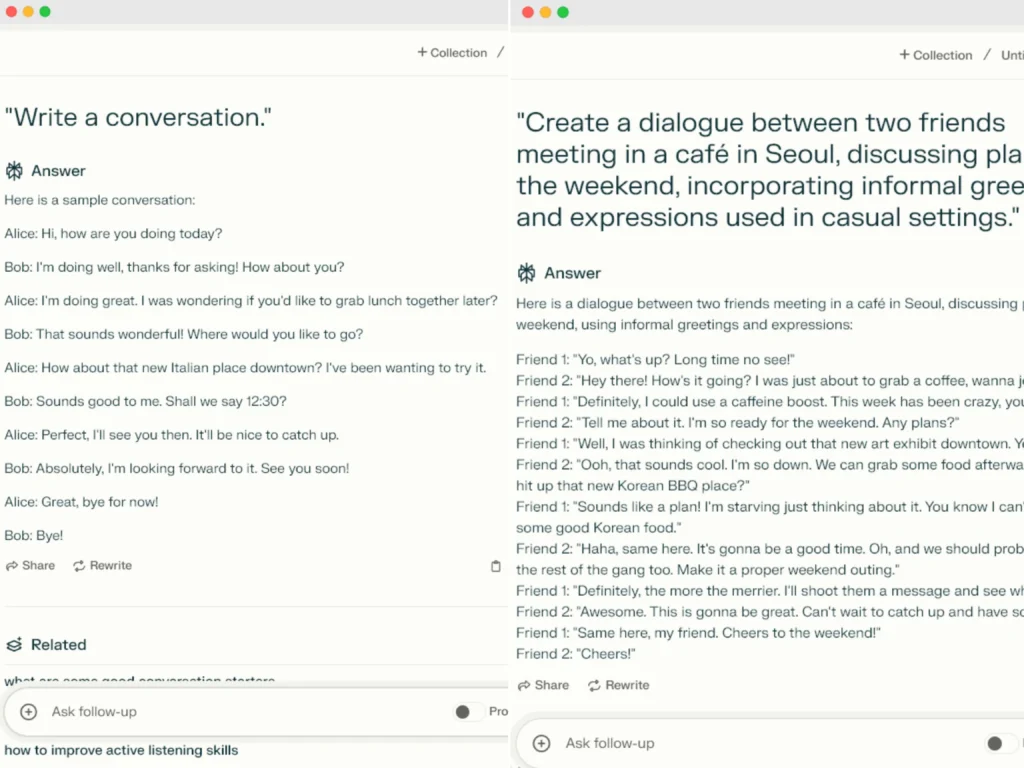
By adding context and background, the prompt becomes rich with details, allowing the AI to produce a more realistic and relatable dialogue.
Conciseness and Relevance
Definition: Keeping prompts focused and relevant ensures that the AI’s responses are directly useful, avoiding unnecessary information.
Before: “Tell me everything about English grammar.”
After: “Explain the difference between ‘there’, ‘their’, and ‘they’re’ with examples.”
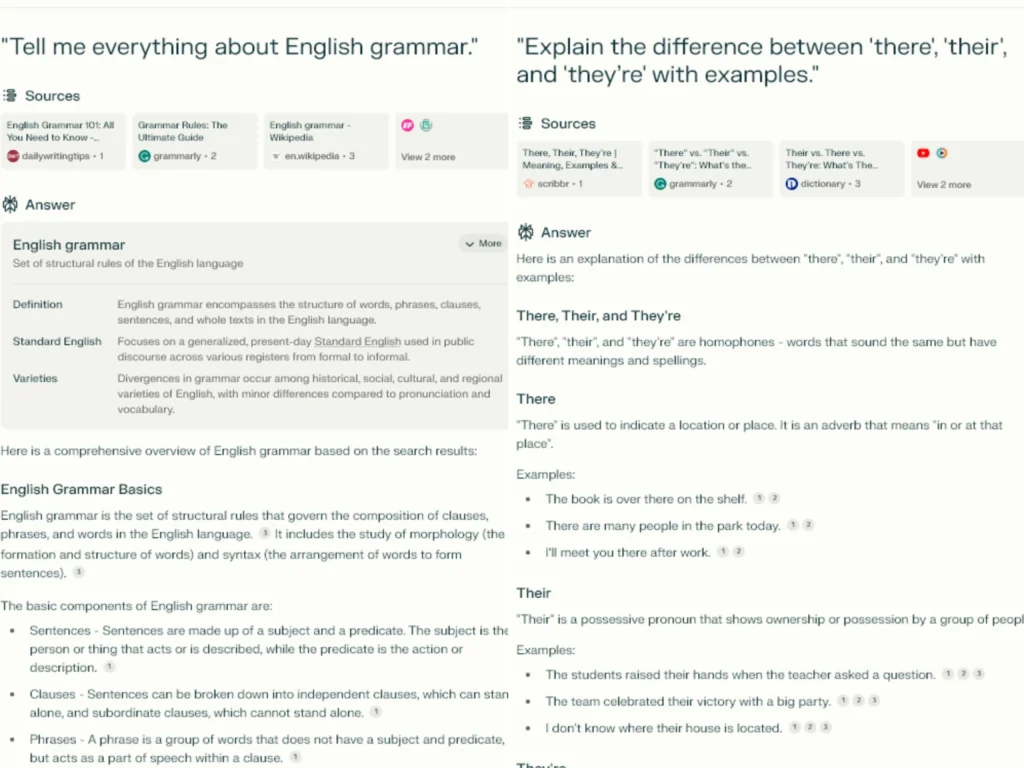
The refined prompt cuts through the breadth of English grammar to focus on a specific, commonly confused aspect, making the AI’s response more practical for learning.
Zero-shot Prompting
Definition: This technique involves asking the AI to respond to a query without prior examples, relying on its built-in knowledge.
Before: “What’s the latest in technology?”
After: “What are the latest trends in renewable energy as of this year?”

The revised prompt directs the AI to provide specific, up-to-date information relevant to the user’s interest.
Few-shot Prompting
Definition: Providing the AI with a few examples to guide its responses, establishing a pattern for it to emulate.
Before: “Give me essay topics.”
After: “Based on these themes: sustainability, technology in education, and global health challenges, generate three essay topics for each.”
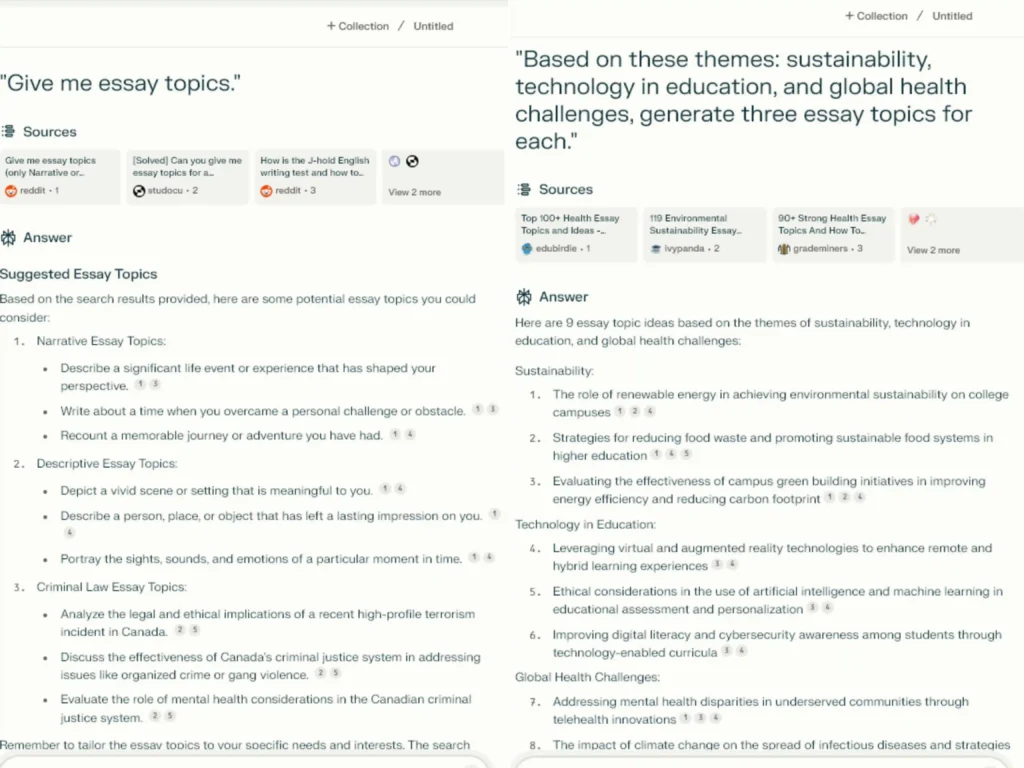
The additional examples clarify the scope and focus for the essay topics, helping the AI generate ideas that align with the student’s curriculum.
Chain-of-Thought Prompting
Definition: Encouraging the AI to detail its reasoning process, often leading to more insightful and understandable responses.
Before: “Summarize this article.”
After: “Read the article and then break down its main arguments into bullet points. Highlight the evidence provided for each argument, and explain in one or two sentences how the author connects this evidence to their overall thesis. Conclude with a brief summary of the author’s conclusion and its implications for the broader field.”
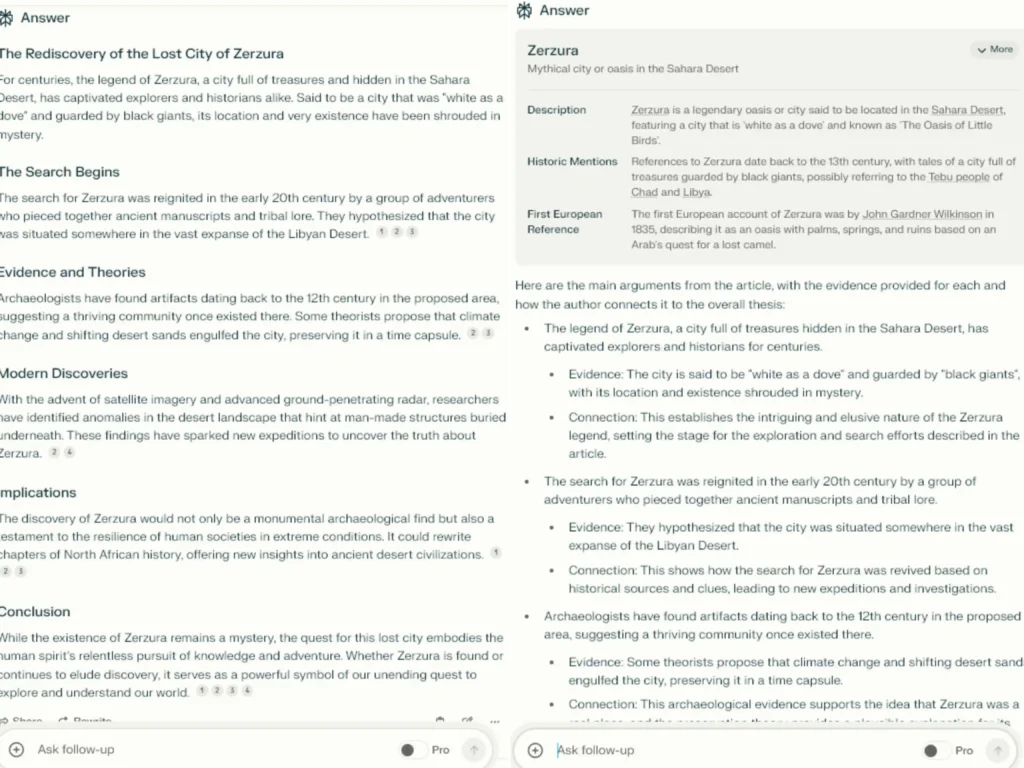
This After prompt is designed to encourage a more detailed and structured analysis, guiding the AI to not only summarize the article but also to critically engage with its content.
It asks the AI to delineate arguments, evidence, and conclusions, making the information more accessible and educational for readers who seek to understand not just the “what” but the “why” and “how” of the article’s content.
Self-Consistency
Definition: Ensuring that prompts maintain a consistent context and topic across multiple interactions, which is crucial for complex, multi-turn conversations.
Before: “How do I analyze my data?”
After: “Building on our last conversation about structuring my environmental science thesis, can you guide me on the best methods to analyze my satellite imagery and wildlife population data to determine the impact of urban development?”
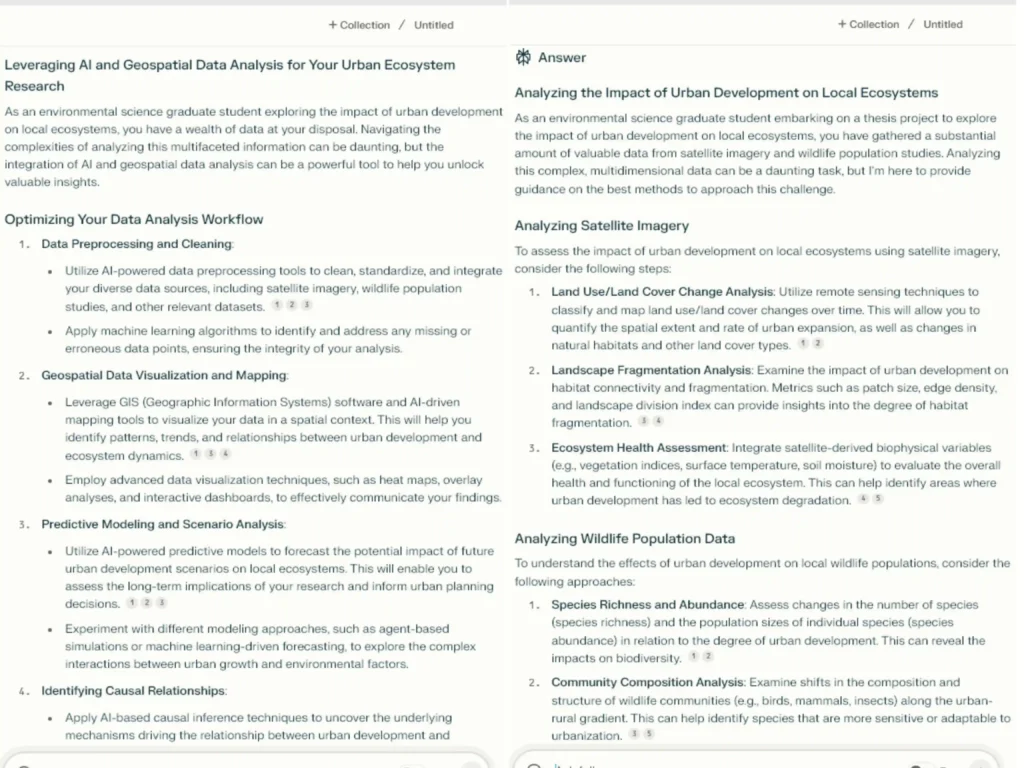
The refined prompt links back to previous discussions, allowing the AI to tailor its advice more effectively.
Prompt Chaining
Definition: Building upon previous prompts to handle complex tasks or follow a line of inquiry, making each prompt a continuation of the last.
Before: “I need study tips.”
After: “Given the study tips on time management you provided earlier, can you now suggest strategies for effective note-taking during lectures?”
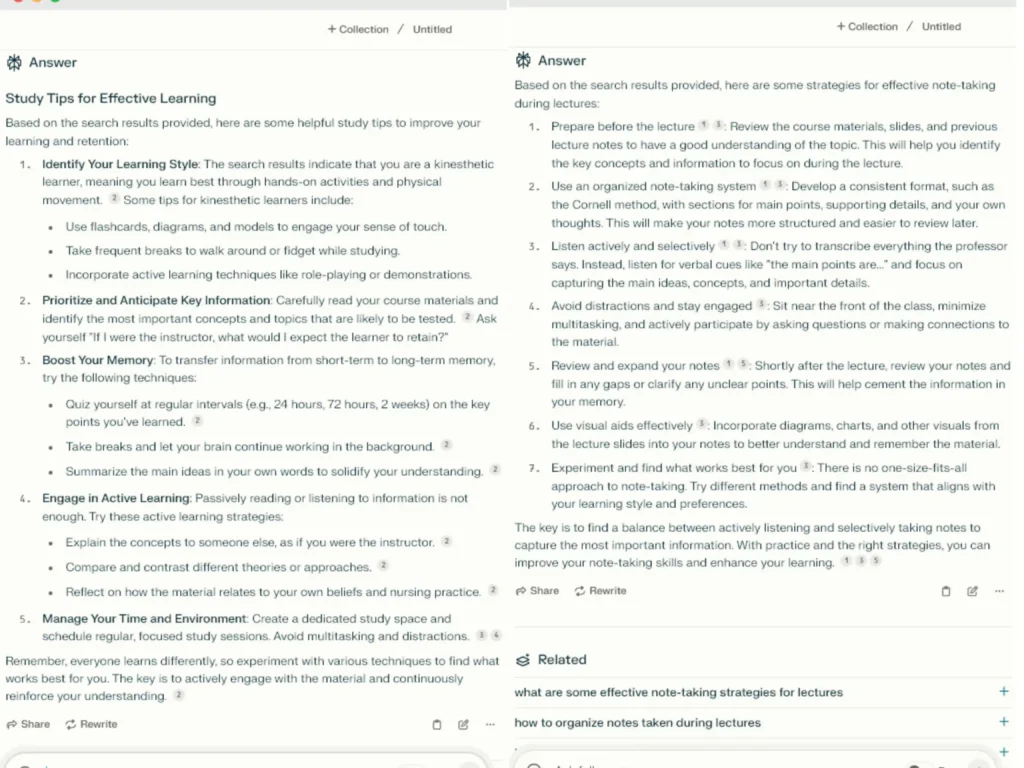
This approach creates a cohesive learning experience, where each prompt and response builds upon the last.
Retrieval Augmented Generation (RAG)
Definition: Enhancing AI responses with external data, making the information provided more comprehensive and up-to-date.
Before: “Tell me about climate change.”
After: “Using the latest research, summarize the impact of climate change on global agriculture patterns as of this year.”
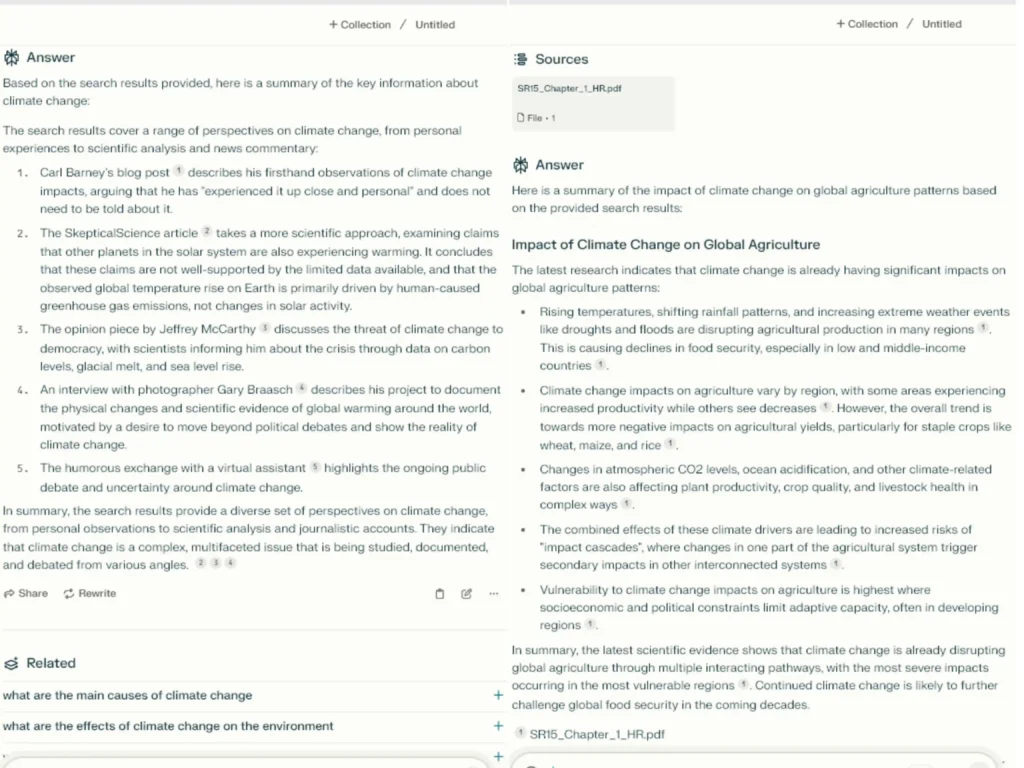
By specifying the use of current research, the prompt directs the AI to integrate the most recent data into its response, enriching the educational content.
Empowering Students with AI-Enhanced Language Learning Techniques
Within my EFL English classes, I’ve harnessed the power of AI to create a dynamic learning environment where students are not just passive recipients but active participants in their language learning journey.
This section highlights practical applications of AI prompting techniques, using real-world prompts from my classroom to illustrate how students can enhance their English proficiency through interactive, AI-assisted exercises.
Engage in Real-Time Conversations
Sample Prompt & Application: “I’m attending a networking event in London. Can you simulate a conversation with a potential employer in the field of renewable energy?”
Utilizing Chain-of-Thought Prompting, this exercise enables students to practice industry-specific dialogues, mirroring the ebb and flow of real conversations.
It teaches them to navigate various conversational scenarios, adapt their language use accordingly, and develop a natural flow in English communication.
Access Up-to-Date Information
Sample Prompt & Application: “What are the latest technological innovations announced at this year’s CES?” Through Zero-shot Prompting, students learn to solicit current information, enhancing their ability to discuss contemporary technological advancements.
Similarly, “Can you summarize the key points from the most recent UN climate report?” employs Retrieval Augmented Generation (RAG), directing the AI to integrate the latest findings into its responses, thereby keeping students informed and engaged with current global issues.
Learn with Contextual Content
Sample Prompt & Application: “I’m interested in British culture. Can you recommend some resources or activities that can help me learn more?”
By applying Few-shot Prompting, this prompt encourages the AI to provide culturally relevant learning resources, making the learning experience more engaging and personalized.
Another prompt, “I want to improve my English writing skills. Can you suggest exercises that focus on creative writing?” uses Prompt Chaining to progressively guide students through a series of writing exercises, enhancing their skill set in a structured manner.
Track Your Learning Progress
Sample Prompt & Application: “Based on our previous discussions about environmental vocabulary, can you create a customized quiz for me?” This approach, leveraging Self-Consistency, allows the AI to tailor quizzes based on the student’s learning history, ensuring that the content is relevant and challenging.
Additionally, “I’ve been practicing English idioms. Can you evaluate my usage in these sentences and correct any mistakes?” employs Chain-of-Thought Prompting to break down the evaluation process, offering detailed feedback and explanations, which are crucial for learning and improvement.
These examples demonstrate the transformative potential of AI in the EFL classroom, offering students a personalized, engaging, and effective learning experience.
Through strategic prompting, students gain the confidence and skills necessary to navigate the complexities of the English language, preparing them for real-world communication and academic success.
Transformative Strategies for Professors Using AI Prompting Techniques
Create Interactive Lessons
Interactive lessons are the cornerstone of engaging education. By employing AI with Chain-of-Thought and Few-shot Prompting techniques, educators can design immersive role-playing scenarios and generate writing exercises that resonate with real-world communication skills.
- Sample Prompt & Application: “Design a lesson plan that incorporates role-playing to teach students about conflict resolution in business settings.” This prompt, which follows Chain-of-Thought Prompting, encourages the AI to painstakingly create scenarios that highlight various aspects of conflict resolution, giving students a hands-on approach to navigating complex interactions.
- Further Example: “Generate a series of prompts that students can use to practice writing business emails in English.” With Few-shot Prompting, this approach enables the AI to produce varied and contextually relevant prompts, mirroring the nuances of professional email communication and fostering students’ business etiquette.
Supplement Teaching with Current Events
Staying abreast of current events and integrating them into the curriculum can significantly enhance the relevance and immediacy of language learning.
- Sample Prompt & Application: “Find articles on recent technological breakthroughs and prepare discussion questions for my class.” Utilizing Retrieval Augmented Generation (RAG), this technique empowers educators to bring the latest technological discussions into the classroom, stimulating informed debates and discussions.
- Further Example: “Create a lesson plan that explores the cultural impact of social media globally.” Through Zero-shot Prompting, professors can guide AI to utilize its vast knowledge base, crafting lesson plans that explore the intricate relationship between social media and cultural dynamics.
Customize Student Learning Paths
Personalized learning paths cater to individual student needs, enhancing engagement and comprehension by addressing specific areas of interest or difficulty.
- Sample Prompt & Application: “Develop a set of grammar exercises based on common mistakes made by intermediate-level students.” By applying Few-shot Prompting, educators can tailor exercises to target frequent errors, making practice sessions more effective and targeted.
- Further Example: “Construct a vocabulary-building activity that focuses on words used in international trade.” Prompt Chaining allows for the development of a structured sequence of activities that progressively build students’ vocabulary, aligning with their academic or professional aspirations.
Enhance Academic Integrity
Educating students about academic integrity and the proper use of sources is fundamental in cultivating responsible scholars.
- Sample Prompt & Application: “Explain the concept of plagiarism and how students can avoid it in their academic work.” Chain-of-Thought Prompting is instrumental here, enabling the AI to break down the concept into understandable segments, providing students with clear guidelines on maintaining integrity in their work.
- Further Example: “Offer strategies for effectively integrating quotes and citations into research papers.” This application not only educates students on the mechanics of citing sources but also instills the importance of ethical scholarship.
These illustrations make it abundantly clear how AI can be a valuable ally in education when given thoughtful prompts.
By integrating these strategies, professors can not only streamline lesson planning and content creation but also significantly enhance the learning experience, preparing students for success in their academic and professional endeavors.
Conclusion
In traversing the realms of AI in English as a Foreign Language (EFL) education, we’ve unearthed a world where the thoughtful integration of AI, notably Perplexity AI, offers a transformative approach to language learning.
From the nuanced art of prompting to its practical applications, we’ve seen how AI can make learning more interactive, personalized, and attuned to the evolving needs of students and educators alike.
These insights, drawn from real-life classroom experiences, highlight AI’s potential to not only enhance educational outcomes but also foster a deeper engagement with the learning process itself.
As we stand at this juncture, the call to action for educators is clear: to embrace the possibilities that AI presents, experimenting with and refining the use of prompting techniques in their pedagogical practices.
The future of education is one that is increasingly digital, and by leveraging AI’s capabilities, we can open up new pathways for communication, understanding, and global connection.
Let us move forward with curiosity and creativity, leveraging AI to enrich our classrooms and inspire our students in their journeys toward linguistic and cultural fluency.
FAQ: EFL Learning with Perplexity AI
What is EFL learning with Perplexity AI?
EFL learning with Perplexity AI involves using advanced AI technology to enhance English as a Foreign Language education, offering personalized and interactive learning experiences for students.
How does Perplexity AI improve EFL learning?
Perplexity AI improves EFL learning by providing tailored prompts and feedback, enabling students to engage in real-time conversations and access up-to-date information, making language learning more effective and engaging.
Can Perplexity AI help with speaking skills in EFL learning?
Yes, Perplexity AI can simulate conversational scenarios, helping EFL students practice and improve their speaking skills in a supportive, AI-driven environment.
Is Perplexity AI suitable for all EFL learning levels?
Absolutely, Perplexity AI’s adaptive technology caters to learners at all levels, from beginners to advanced, by customizing prompts and content according to the user’s proficiency.
What makes Perplexity AI unique in EFL learning?
The unique aspect of EFL learning with Perplexity AI lies in its ability to instantly adjust focus based on user input, offering a highly personalized learning journey that traditional methods can’t match.
How can teachers integrate Perplexity AI into their EFL curriculum?
Teachers can integrate Perplexity AI into their EFL curriculum by using it to create interactive lessons, provide instant feedback, and supplement teaching materials with real-world AI interactions, enriching the learning experience.







Recent Comments